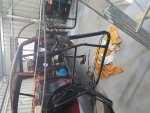Next time I’ll try that - main thing is I don’t want there to be a next time, so horrendous was the job.
Sent from my iPhone using Tapatalk
Agreed, and remember to wear breathing/ hand protection with sceney's or do a stock take on finger tips after finishing.

